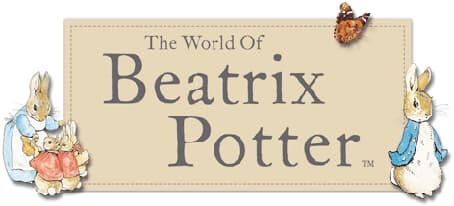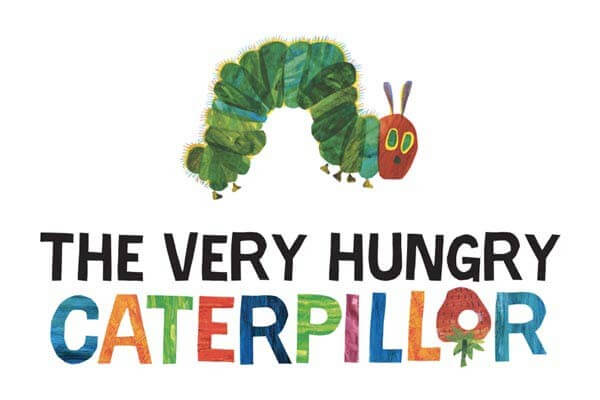Modern Saints Who Inspire Mental And Spiritual Healing
In an era where mental and emotional wellbeing is increasingly front-of-mind, the lives of modern saints bridge the spiritual and psychological worlds—offering models of courage, compassion, suffering embraced and healed. These holy figures demonstrate that spiritual healing often accompanies psychological resilience, and that mental struggles need not be obstacles to sanctity, but can become pathways to deeper wholeness. For a New Zealand audience accustomed to valuing mindfulness and holistic wellbeing, the stories of modern saints who engage both mind and soul hold particular resonance: they remind us that faith, vulnerability and healing are not mutually exclusive, but deeply intertwined.
What We Mean by “Modern Saints” in This Context
The term “modern saints” here refers to Christian figures—especially within the Catholic tradition—whose lives, within the last several
centuries (and in some cases still within living memory), highlight extraordinary responses to mental, emotional or spiritual suffering.
They are individuals who not only drew near to God amid their own inner struggles but also responded in compassionate service, building
hospitals, ministries or movements of healing. In doing so they speak powerfully to the intertwined dimensions of mental health and
spiritual wellness—domains that many in New Zealand are coming to recognise as inseparable.
The Convergence of Mental Health and Spiritual Healing
Mental health and spiritual healing are often treated as separate spheres—psychology and psychiatry on one hand, religion and spiritual care
on the other. Yet research and experience increasingly show that the two often overlap: spiritual distress can aggravate mental suffering;
mental illness may prompt deeper questions of meaning and identity; and spiritual practices (prayer, community, service, meaning-making) can
promote recovery and resilience. For example, the broader Christian tradition of pilgrimage and shrine-visits includes documented
psychosocial benefits such as a sense of hope, community connection and meaning-making. National
Catholic Reporter+1
In this light, the modern saints who engaged both the mind and the spirit become especially relevant: they did not ignore psychological
suffering, but embraced it, transformed it and through it opened doors to healing for others.
Case Study 1: Saint Dymphna – Patron of Mental Illness
Saint Dymphna lived in the 7th century (though her story is preserved in later tradition) and is often invoked as the patron saint of those
suffering mental or neurological disorders, as well as emotional distress. Catholic
Answers+2Catholic Answers+2
Her narrative frames mental-health challenges in a spiritual dimension: Dymphna fled her father’s court (in which he himself suffered mental
breakdown) to preserve her Christian identity, eventually facing martyrdom. Her life and legacy have given rise to the town of Geel
(Belgium) with its historic model of community-based psychiatric care and hospitality. catholicmhm.org
For a modern audience in New Zealand, Dymphna’s story offers several key lessons:
- The recognition that mental distress need not exclude one from sanctity; rather, it can deepen one’s empathy and service.
-
The value of community-based, not simply institutional, responses to mental illness—a lesson relevant in rural and urban NZ mental-health
settings.
-
The way spiritual vocation (Dymphna’s consecration to Christ) can co-exist with psychological struggle—there need be no conflict between
seeking professional help and seeking spiritual solace.
In short, Dymphna remains a figure of healing hope for those battling anxiety, depression or brain-health issues, a reminder that faith and mental resilience need not be polarised.
Case Study 2: Saint John of God – Mental Health, Compassion and Service
Saint John of God (1495–1550) is widely recognised for his ministry to the sick, the poor and particularly those with mental illness. tabella.app+2Aleteia+2
His life is characterised by dramatic conversion, personal mental-health vulnerability, and institutional innovation: after his own
psychological breakdown and time in a psychiatric-like hospital, he went on to found the Brothers Hospitallers, a religious congregation
devoted to holistic care of body, mind and spirit. Aleteia
For a New Zealand audience, John of God offers critical insights:
-
He models how personal suffering (including mental-health symptoms) can be an entry point into deep service and healing mission—not just for
oneself, but for others.
-
He demonstrates the integration of spiritual faith and compassionate medical/psychiatric care—anticipating modern models of faith-based
mental-health ministry.
-
He emphasises dignity of those with mental illness: his hospitals sought to treat not just the body, but spiritual and emotional wounds.
This saint invites us to consider mental-health care not only as clinical management, but as embodied service—rooted in meaning, compassion and holistic care.
Case Study 3: Reflecting on Other Saints and the Broader Tradition
While Dymphna and John of God are particularly strong examples for mental and spiritual healing, the broader tradition of saints includes
many who experienced inner turmoil, darkness of soul, anxiety, depression or existential struggle—and through that became sources of healing
for others. The Catholic Mental Health Ministry website notes: “Some Saints lived with mental illness… Saints lived with every kind of
illness, and those who lived with mental illness can give hope to millions of people who live with mental illness today.” catholicmhm.org
For instance, saints such as Saint Teresa of Calcutta experienced deep periods of spiritual desolation, which did not exclude her mission of
service but rather deepened it. Caritas
Counseling Center+1
In a New Zealand context, the significance is: the barrier between “wellness” and “sainthood” is not impermeable. Those who struggle
psychologically or spiritually may yet contribute profoundly to healing—for themselves and their communities.
Themes of Healing: Integration of Mind, Body and Spirit
A key takeaway from these saints is the integrated approach to healing. Specifically:
-
Recognition of suffering: These saints did not deny mental or spiritual pain; they entered it. In fact, for many, the
journey into suffering became the doorway to deeper compassion.
-
Compassionate service as healing: Instead of focusing only on self-recovery, the saints turned outward—service to others
became a means of healing their own wounds and those of others.
-
Holistic care models: They recognised that healing is not just physical or mental, but has a spiritual dimension—community,
prayer, meaning, belonging all matter.
-
Hope and meaning-making: They reframed suffering as not just an obstacle but a meaningful cross—an invitation to
transformation. For example, the tradition of offering up own mental-health struggles “for” others or for the Kingdom of God. The
Pray More Retreat+1
-
Destigmatisation of mental illness: In communities such as Geel (linked to Dymphna) we see early examples of acceptance and
hospitality for those with mental disorders rather than exclusion. catholicmhm.org
For a New Zealand audience where conversations around mental health are becoming more open, these themes resonate strongly. They suggest that spirituality and mental wellbeing can, and perhaps should, intersect.
Application for a New Zealand Context
How might the lives of these saints inform spiritual and mental health practices here in Aotearoa?
-
Spiritual resources integrated with therapy: Churches, faith communities and mental-health services can incorporate
meaning-making rituals, prayer, storytelling of suffering-and-healing, drawing on the saintly examples. For instance, referencing Dymphna as
a figure of mental-health hope can help reduce stigma within faith communities.
-
Service as healing: Encouraging people who have endured mental health challenges to engage in compassionate
outreach—volunteering, peer support—can mirror the service-oriented healing path of these saints.
-
Holistic pastoral care: Faith leaders and pastoral carers can think more intentionally about mental-health dimensions of
spiritual care—recognising depression, anxiety, trauma as not just medical issues but spiritual opportunities for accompaniment, growth and
meaning.
-
Community hospitality and inclusion: Inspired by Geel’s long history of hosting people with mental illness (linked to the
legacy of Dymphna), New Zealand faith and community groups can foster welcoming spaces—not just for those well, but for those unwell,
mentally or spiritually—to be seen, accompanied, accepted.
-
Resilience through meaning: In a society increasingly aware of burnout, stress and mental-health pressures (especially in
younger adults), the example of saints who experienced inner darkness yet persevered can offer hope: that suffering need not be meaningless.
The words of John of God or other modern saints can serve as anchors: “I suffered, I served, I was healed — and so can you”.
-
Bridging faith and mental-health professionals: The saints show that spiritual faith and professional care need not
compete. Christian healthcare, pastoral counselling and psychology can collaborate, echoing the holistic care models pioneered by saints
like John of God.
Best Practices for Individuals and Communities
Drawing from the saintly models, here are some practical suggestions:
-
Create space for spiritual reflection of psychological suffering: Encourage journaling, guided meditation, prayer or group
reflection that explicitly engages emotional and mental health challenges.
-
Encourage service-oriented healing: Even small acts of kindness or volunteering can shift a person from “victim-of-illness”
to “agent-of-healing”, mirroring the saints’ path.
-
Promote supportive faith-community environments: Churches or groups might hold seminars or discussion groups on mental
health and spirituality, referencing saints like Dymphna or John of God to normalise the overlap.
-
Foster partnership between mental-health professionals and spiritual caregivers: Training for pastoral leaders on mental
health awareness, and vice versa—training for counsellors in spiritual sensitivity—can reflect the integrated healing the saints lived.
-
Celebrate stories of healing and meaning: Use the hagiographies (life stories) of modern healing saints as inspiration:
their narratives can bring hope when words of mere medical diagnosis may feel cold.
-
Encourage self-compassion and acceptance of struggle: One of the key lessons from the saints is that inner suffering does
not disqualify one from holiness—it can become a doorway. Encouraging people to treat themselves with grace aligns with the spiritual
tradition of suffering transformed.
-
Build inclusive hospitality for mental-health vulnerability: In community life (churches, groups, social gatherings) make
space for those with mental-health challenges—not simply as recipients of service—but as full participants in community life and leadership.
This echoes the hospitality in the story of Dymphna and the town of Geel.
Why These Saints Matter Now
We live in a time of unprecedented mental-health pressures: the pace of life, social isolation, meaning-crises, trauma, pandemic
after-effects. Alongside biomedical and psychological interventions, spiritual resources are often under-used. The lives of modern saints
bridge this gap—showing that spirituality can accompany mental healing and that mental suffering does not exclude a life of deep meaning or
service.
For New Zealanders, who value holistic, inclusive and community-based wellbeing, these saints present a compelling model: one that transcends the modern secular divide between “mental health” and “spiritual life.” Instead, they invite us to live fully—mind, body and spirit—anchored in compassionate service, community, meaning-making and hope. In doing so they help build a culture of healing that honours our mental struggles as part of our journey, not aberrations to be hidden.
Conclusion
In summary: the modern saints highlighted here—especially Saint Dymphna and Saint John of God—offer profound insights for mental and
spiritual healing in our time. Their example shows that suffering, when met with faith, compassion and service, can become a wellspring of
healing not only for oneself but for others. In a New Zealand context, where mental health is a priority and spirituality remains a valued
dimension of life, their lives call us to integrate psychological care and spiritual nurture, to build communities of inclusion, and to see
our inner wounds not as shame, but as gateways to deeper connection and meaning.
May their witness inspire individuals, faith communities and mental-health professionals alike to embrace a more holistic vision of
healing—one that honours mind, body and spirit together.



.jpg)









.jpg)





.jpeg)





.jpeg)



.jpeg)








.jpeg)



.jpeg)

.jpeg)

.jpeg)

.jpeg)




.jpeg)
.jpg)

.jpeg)






.jpeg)
.jpeg)




.jpeg)





.jpeg)


.jpeg)

.jpeg)

.jpeg)

.jpeg)







.jpeg)
.jpeg)
.jpeg)





.jpeg)



.jpeg)






.jpg)
.jpeg)









.jpg)


ulva-Logo.jpg)




.jpeg)



.png)















.png)
























